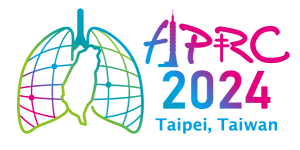Symposium 18:Pulmonary Hypertension
| Time (GMT+8) |
Topic | Speaker | Country / Region |
|---|---|---|---|
| 08:30-09:00 | Living-donor lobar LTx for pulmonary hypertension | Dr. Daisuke Nakajima | Japan |
| 09:00-09:30 | Incidence and long-term outcome of chronic thromboembolic pulmonary hypertension in Taiwan | Dr. Chi-Wei Tao | Taiwan |
| 09:30-10:00 | Emerging new drugs for pulmonary hypertension | Dr. Ping-Hung Kuo | Taiwan |
Living-donor lobar LTx for pulmonary hypertension
Abstract:
Living-donor lobar lung transplantation (LDLLT) was developed by a group in the University of Southern California in 1993 and was introduced in Japan in 1998 in order to resolve a serious problem of donor organ shortage. By the end of 2022, a total of 1,036 lung transplant procedures had been performed in Japan, and LDLLT accounted for 27% of these procedures. LDLLT was basically indicated for critically ill adult and pediatric patients with various lung diseases, including pulmonary hypertension (PH).
Between 2008 and 2022, we performed LDLLT for 12 (7 pediatric) patients who suffered from PH in Kyoto University. Functional size matching with forced vital capacity was 69.5 ± 21.0% and anatomical size matching with 3D-CT volumetry was 121.1 ± 52.7%. Novel LDLLT procedures were employed in 8 patients in order to deal with the issue of size mismatching between the recipients and lobar grafts, including 2 native upper lobe-sparing, 1 right-to-left horizontally rotated, and 5 single-lobe transplantation. The LDLLT procedures were performed under cardiopulmonary support and the total graft ischemic time was 157 ± 40 minutes. The mean pulmonary arterial pressure significantly decreased from 65.2 ± 23.5 mmHg to 22.4 ± 9.2 mmHg immediately after LDLLT. The LDLLT patients demonstrated comparable post-transplant outcomes with the 27 PH patients receiving brain-dead donor lung transplantation (BDLT): The postoperative extracorporeal membrane oxygenation (ECMO) requirement was 41.7% after LDLLT and 25.9% after BDLT; the in-hospital mortality rate was 8.3% after LDLLT and 7.4% after BDLT; the 1- and 5-year survival rates were 91.7% and 91.7% after LDLLT and 92.6% and 82.8% after BDLT.
Meticulous perioperative management is required for PH patients, considering the frequent requirement of ECMO support for dealing with primary graft dysfunction after LDLLT. Finally, LDLLT can successfully ameliorate PH and provide favorable posttransplant outcomes.
Dr. Daisuke Nakajima

Japan
EDUCATION
Apr 1995 – Mar 2001 Kyoto University, Faculty of Medicine
MD
Apr 2009 – July 2016 Graduate school of medicine, Kyoto University
PhD
POSTGRADUATE TRAINING
Jun 2001 – Apr 2002 Resident, Department of Thoracic Surgery, Kyoto University Hospital, Kyoto, Japan
May 2002 – Jul 2002 Resident, Department of General Surgery, Shizuoka Hospital, Shizuoka, Japan
Aug 2002 – Apr 2005 Resident, Department of Thoracic Surgery and Cardiac Surgery, Shizuoka Hospital, Shizuoka, Japan
May 2005 – Mar 2009 Fellow, Department of Thoracic Surgery, Japanese Red Cross Wakayama Medical Center, Wakayama, Japan
Apr 2009 – Jun 2012 Fellow, Department of Thoracic Surgery, Kyoto University Hospital, Kyoto, Japan
Jul 2012 – Jun 2016 Research fellow, Latner Thoracic Surgery Research Laboratories, Toronto General Research Institute, University Health Network, University of Toronto
Jul 2016 – Jun 2017 Clinical fellow, Toronto Lung Transplant Program, Toronto General Hospital, University Health Network, University of Toronto
ACADEMIC APPOINTMENTS
Jul 2017 – Nov 2019 Assistant Professor
Department of Thoracic Surgery, Kyoto University
Dec 2019 – present Senior Assistant Professor
Department of Thoracic Surgery, Graduate School of Medicine, Kyoto University
Incidence and long-term outcome of chronic thromboembolic pulmonary hypertension in Taiwan
Abstract:
Chronic thromboembolic pulmonary hypertension (CTEPH) is a rare condition, and delayed diagnosis or treatment can significantly impact patient prognosis. The complexity of diagnosing CTEPH depends on the experience of clinicians and available medical resources. Currently, the primary treatment modality remains EPA, with or without BPA or novel targeted medications. Historically, the incidence and clinical features of CTEPH in Taiwan and other Asian populations were poorly understood. Our society conducted a retrospective Taiwan cohort study – the Registry of CTEPH – over a two-year period, inclusive of follow-up. Adhering to global guidelines, the study aimed to explore the geodemographics of CTEPH in Taiwan and outline practical management and treatment outcomes. Today, we present the study’s findings on incidence and outcomes, concurrently discussing our society’s next steps in establishing an education and referral system.
Dr. Chi-Wei Tao

Taiwan
Expertise:Diagnosis and treatment of various thoracic diseases, made efforts to expand the field of pulmonary hypertension and interstitial lung disease.
Emerging new drugs for pulmonary hypertension
Abstract:
Therapeutics in pulmonary arterial hypertension (PAH) has been an area of explosive research over the last 20 years. The current cornerstone of PAH treatment is pulmonary vasodilators. Considering the multiple mechanisms underlying PAH pathogenesis, it may be necessary to explore novel molecular targets responsible for the disorder, and to develop formulations that can be delivered to the target sites more effectively. New developments in established PAH medications include the fixed ERA/PDE5i compound, high-dose macitentan, dry powder formulation of treprostinil, device for inhaled nitric oxide, relinepag (an IP agonist), MK-547 (an inhaled sGC), etc. For novel therapeutic targets in PAH, recent investigations largely focus on various mechanisms involving BMPs, growth factors, tyrosine kinase, serotonin, estrogen, immunity/inflammation, and metabolism, among others. The new drugs under clinical development for these novel approaches include sotatercept, inhaled imainib, seralutinib, rodatristat, sirolimus, ranolazine, etc. Of note, sotatercept is a fusion protein that acts as a ligand trap and prevents its binding to the BMPR-ALK1 receptor complex, thereby inhibiting the downstream signaling pathways involved in endothelial and smooth muscle cell proliferation. Several clinical trials have demonstrated its efficacy to improve pulmonary vascular resistance and exercise capacity among PAH patients. These encouraging results suggest that this novel approach may act both to vasodilate and to address the detrimental changes of pulmonary arterial and right ventricular remodeling, offering hope for a potential breakthrough in PAH treatment. In the future, therapies targeting alternative pathways may represent complementary approaches to treatment of PAH, allowing for multimodal therapy alongside pulmonary vasodilators. This lecture will briefly highlight recent clinical development of these potential new drugs for PAH.
Dr. Ping-Hung Kuo

Taiwan
Dr. Hsao-Hsun Hsu

Taiwan
Dr. Ching-Lung Liu

Taiwan




